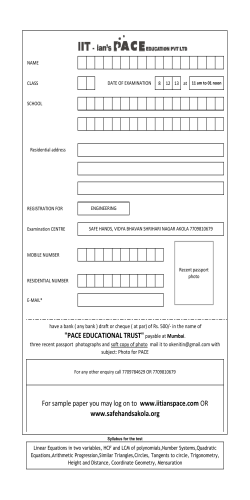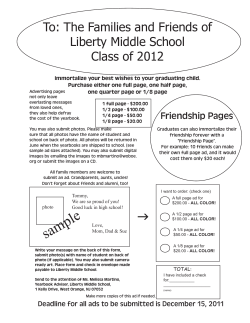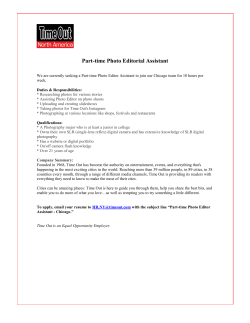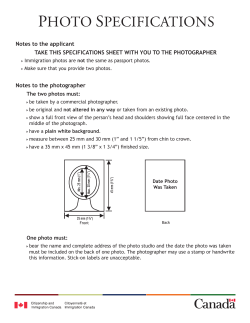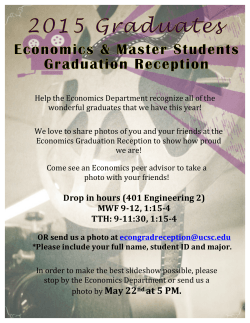
ʻAimalama Symposium Report
ʻAIMALAMA SYMPOSIUM REPORT Kailua, Koʻolaupoko, Oʻahu, Hawaiʻi October 3-5, 2014 TABLE OF CONTENTS 2 • Note from Director • 2014 ‘Aimalama Symposium Introduction • Kaulana Mahina- Hawaiian Lunar Calendar in History • Ke Kai (The Ocean) • Ka ʻĀina (The Land) • Ka Huli Ao (Climate Change) • Action Plan and Next Steps • Appendix A- 2014 ʻAimalama Symposium Agenda • Appendix B- 2014 ʻAimalama Symposium Participants List NOTE FROM THE DIRECTOR Aloha nui kākou e nā hoa kilo honua mai Hawai‘i nui o Keawe a hiki aku i Ni‘ihau o Kahelelani. Loli Aniau, Maka‘ala Aniau (Climate Change, Climate Alert) or “LAMA” is a project housed within the University of Hawaiʻi at Mānoa Hawaiʻinuiākea School of Hawaiian Knowledge (HSHK), one of the largest schools of indigenous knowledge in the United States. LAMA’s mission is to catalyze climate adaptation and resiliency by engaging communities in Hawai’i and beyond through innovative training and policy tools that link decision-makers with the university, island communities, and the public as well as private sectors. It is our goal to engage and empower climate justice communities in Hawai‘i and globally. The overall goal of the “Lamakū Naʻauao” project is to build the capacity of the Native Hawaiian community to participate in decision-making and contribute to an enhanced capacity for our islands’ food, agricultural sectors and cultural practices to be resilient to the impacts of climate change. LAMA believes that by enhancing the collective knowledge, skills and attitudes of the participants we are lighting the lama (torch) in each community regarding these key issues that our communities are faced with. The participants become strengthened leaders in their communities who inform others about the reality we face and encourage them to take action. In October 2014, LAMA partnered with Kalei Nuʻuhiwa and Kamaʻaha Education Initiative to organize the ʻAimalama Symposium. The primary purpose of the symposium was to engage, listen and learn from one another as lunar calendar practitioners and to enhance the collective knowledge and skills of the participants regarding the use of the Kaulana Mahina, ancient Hawaiian lunar calendar. We invited cultural experts, practitioners, and leaders from different islands to collaborate in building a strong kahua for the lunar calendar practitioners network and to provide feedback on the draft LAMA Kilo Honua resources. We also worked on an action plan that leads towards a lunar calendar symposium in 2015 for indigenous practitioners from Hawaiʻi and the Pacific and in 2016 a global symposium that would inform discussions of the IUCN World Conservation Congress, hosted in Hawaiʻi as well as other international meetings. ʻo au iho nō, Malia Nobrega-Olivera Director of Strategic Partnerships and Community Engagement 3 2014 ‘AIMALAMA SYMPOSIUM In the ahupuaʻa of Kailua, the moku of Koʻolaupoko, on the island of Oʻahu, cultural practitioners, community educators, kupuna, and resource managers from Ka Pae ʻĀina Hawaiʻi convened at an intensive two day symposium to explore how observation of the lunar phases effectively enhances our collective work. Together we openly shared and detailed the successes of our mālama ‘āina efforts within the context of sustainability and community empowerment and we discussed how these culturally-rooted initiatives and perspectives present the unique opportunity to reconnect with Kaulana Mahina (the lunar calendar). The group came together to lay the foundation and create an 4 action plan for a Kaulana Mahina conference that would be open to Hawaiʻi and Pacific Island practitioners in September 2015. The network envisions the gathering will engage practitioners and the larger community with the primary goal of enhancing our collective knowledge, skills and attitudes toward our re-adaptation to a changing climate as we strengthen our traditional practice of being kilo (observers). The 2015 conference will seek to inspire the public to take action within our own communities towards sustainable systems, attitudes, and practice with Kaulana Mahina as the guiding force. Through engaging listening, discussion and presentation sessions, the network collectively affirmed that reconnecting with the rhythm of the mahina can be an effective tool in teaching the populace to recognize natural indicators, mālama our natural resources, and return to a culture of temporal observation that has sustained and continues to sustain Hawaiʻi’s population. 2014 ‘Aimalama Symposium Participants Photo Credit- Hauʻoli Waiau KAULANA MAHINA ~ HAWAIIAN LUNAR CALENDAR IN HISTORY Renowned Kaulana Mahina practitioner, Kalei Nuʻuhiwa, opened the first day of our gathering by providing a thorough overview of Papahulilani, the traditional Hawaiian field of atmospheric studies, citing Hawaiian scholars and their manaʻo based on the ancient practice of observation according to the moon phases and other celestial phenomenon. Her presentation underscored the importance of reconnecting with the pulse of nature, asserting that Kaulana Mahina is a viable guide gifted to us by our ancestors that can steer us back to a close relationship with our natural world. She shared the similarities of moon observations across Pacific cultures, 5 and cultural traditions and histories associated with the moon. Kalei noted that the term kaulana, often translated as “famous,” also refers to cycles and the natural sequence of things, and as such, with each sequence of the moon phases, we can expect predictable occurrences on each night and climactic differences between seasons. Focusing primarily on the Hawaiian moon calendar, she detailed the 30 phases, practices occurring on each night, the seasons making up the calendar year, and the opportunities that each phase and season presented for the practitioner. Photo Credit- Malia Nobrega-Olivera Photo Credit- Kalei Nuʻuhiwa KE KAI (THE OCEAN) 6 Photo Credit- Patrick Kaleihiwalani Ramos our ancestors understood the correlation between mahina and fish aggregation, tides, and seasonal changes. Monthly, the rise and fall of the ocean’s tides owes its existence to the moon, from low to high points, to fish spawning, the One of the most noticeable/visible effect the mahina has on our earth is mirrored in her oceans. Kalei also reminded us that moon has reigned over the kai for millennia, and there is so much to be learned ~ and practiced ~ through the traditional ways of our ancestors and the knowledge that our kupuna have documented for us in our moʻolelo, mele, pule, oli, etc. K A UL A ʻ UA A W LAWAIʻA O LOK IʻA Photo Credit- Malia Nobrega-Olivera 7 Photo Credit- Kala Thomas Photo Credit- Malia Nobrega-Olivera KE KAI: LAWAIʻA (FISHING) Today, the use of Kaulana Mahina is determined regionally and its application varies from one moku to another, from one ahupuaʻa to another. This notion is beautifully illustrated in the near shore and deep water fishing traditions throughout Hawaiʻi. As Dean Tokishi noted in his presentation to the group, this place-specific variable is crucial to maintaining the health of our ocean resources. Dean is a Wailuku bred spear fisherman who currently serves as the Ocean Program Manager for the Kahoʻolawe Island Reserve Commission (KIRC). His team works with local fishermen harvesting in and around the reserve to conduct thorough analyses of spawning patterns and other marine observations in the hopes of developing a comprehensive, 8 traveling resource to correlate moon phases with catch reports. This collaboration provides a valuable snapshot of the reserve’s health, and allows for effective monitoring of the fishery. Localized monitoring has proven effective for other fishing communities in Hawaiʻi, such as the recently highlighted success of the community-based subsistence fishing area in Haʻena, Kauaʻi. Kauʻi Fu, who works with the Waipā and Haleleʻa communities in Haʻena, is a practitioner who concurs with this form of communitybased monitoring and ownership. The fishermen are the ones in the kai actively interacting with the ecosystem, and while obtaining catch reports can sometimes present a challenge, it is a vital piece to ensuring the long term health of the fishery. Revered kupuna and longtime Maui fisherman ʻAnakala Les Kuloloio reminds us that our fragile ocean resource and everything in it is interconnected, and through deliberate kilo, we can ensure its sustainability for our keiki today and for the many generations to come. Photo Credit- Dean Tokishi He lawaiʻa no ke kai papaʻu, he pōkole ke aho; he lawaiʻa no ke kai hohonu he loa ke aho. A person whose knowledge is shallow does not have much, but he, whose knowledge is deep, does. Luka Mossman, who works with Hawaiʻi Conservation International (HCI), also advocates for the sustainable management of smallscale fisheries through his work. Echoing the manaʻo of KIRC and the Haʻena community, he asserts that lawaiʻa know their fisheries best, and that each place is unique in their practices, environments, and the behavior of the fish. HCI urges fishing communities to study spawning patterns of fish local to specific areas, and restore coastal habitats and biological systems in an effort to transform seafood value and supply chains. This community-driven science can not only sustain the local fisheries, it can inform the State’s data (which is often inconsistent with the realities of the fishery), which in turn can inform policy, as well as the practice for generations to come. 9 Engaging the youth in this plan is key, as their shift in resource management can have positive impacts on an entire community. Discussion around Luka’s presentation suggested a return to the practice of catching and eating the smaller fish, allowing the bigger ones to continue to reproduce and sustain the fishery. Photo Credit- Malia Nobrega-Olivera Photo Credit- Dean Tokishi KE KAI: LOKO IʻA (FISH PONDS) Hiʻilei Kawelo, Executive Director at Paepae o Heʻeia, shared valuable manaʻo about how the fishponds are regulated by mahina. The pond and surrounding areas are rich with Hina moʻolelo, and underscores the importance of a close relationship with the mahina. With shallow reef systems that are constantly subject to tidal changes directly impacting restoration work, the mahina is always in mind at the pond. In light of a changing climate and changes in our environment, she stressed the need to transition our people from lawaiʻa to mahi iʻa ~ from fisher people to fish farmers. 10 Maintenance and restoration work at Paepae o Heʻeia is dictated by the mahina and seasonal changes. Recorded observations of these lunar and seasonal variables have allowed their hui to determine the best times to perform different kinds of work, recognize patterns in recruits and migrations of sea life, and anticipate how mahina will affect productivity. All the while, the hui incorporates an educational component, correlating the needs of the pond with learning and teaching opportunities for the community. “Through the disciplined cultivation of observation skills, we learn about adapting to change by anticipating the forces that arrive to influence our environment” – Roxanne Stewart Roxy Stewart, a cultural resource teacher at Ka ʻUmeke Kaʻeo, utilizes Papakū Makawalu methodology in all of her work. This methodology incorporates categorization, familiarization with Photo Credit- Kalei Nuʻuhiwa E mālama ʻia nā pono o ka ʻāina e nā ʻōpio. The traditions of the land are perpetuated by its youth. natural patterns, kilo practices, data collection, habituating practice, decision-making, thinking in terms of cycles, etc. The educational work Roxy is doing with the haumāna seeks to internalize ancestral knowledge and practice of following the pō mahina by thinking in terms of cycles, and having that be a part of everyday culture with kilo as their foundation. The work also seeks to provide facilitation training, equipping kumu with necessary tools to successfully engage haumāna in relevant ways. Using this approach, Hale o Lono students created a lunar calendar, and presented it to the community, showcasing the value of this kind of training by utilizing ancestral ʻike as effective resource management. Photo Credit- Roxy Stewart Photo Credit- Patrick Kaleihiwalani Ramos 11 KE KAI: HOLO MOANA/WAʻA KAULUA (VOYAGING) “Guided by the heavens, our ancestors populated every corner of the Pacific Ocean. Through keen observations of the environment, they were able to glide over the vast ocean with confidence and intent. Today, the canoe remains an integral part of our existence, spurring cultural revitalization and reawakening ancient knowledge,” shared by Bonnie Kahapeʻa-Tanner and Pua Maielua-Lincoln. 12 The revived art of wayfinding, attributed to the mana of Satowal native Mau Piailug and passed on to an eager crew of kānaka maoli in the late 1970ʻs, also depends heavily on the mahina. Bonnie Kahapeʻa-Tanner and Pualani MaieluaLincoln, captains of Kānehūnāmoku, a 29 foot double-hulled sailing canoe, shared that navigation practices require intense kilo techniques, and that being in the flow with navigational ʻike, and opening up to receive it, only comes through practice. Photo Credit- Bonnie Kahapeʻa Photo Credit- Kala Thomas ʻAu i ke kai me he manu ala. Cross the sea like a bird. As open ocean seafarers, the mahina is critical in many aspects like tracking time, course, speed and declination. Voyages are planned around the moon phases and seasons, dictating when voyages begin and end, and providing essential night lighting when traveling to atolls. An increase in frequency of deep-sea voyages will aid in developing systems of practice through kilo, providing a sequential template for longer sails that build on foundational maritime skills. The Kānehūnāmoku Voyaging Academy perpetuates the tradition of the canoe to help guide our people 13 towards their destinations, in-and-out of the canoe, with the same confidence and intent of our ancestors. Through educational outreach to schools and communities, Kānehūnāmoku stands as an extension of the Hōkūleʻa legacy to reinvigorate the wisdom of our kūpuna through deliberate, hands-on practice. Photo Credit- Anuenue Punua Photo Credit- Kala Thomas KA ʻĀINA (THE LAND) 14 Photo Credit- Malia Nobrega-Olivera He aliʻi ka ʻāina, he kauwā ke kanaka. The land is the chief, man its servant. AU LAPAʻA ʻ Ā 15 U L KAU K A Ā M U ʻO I ʻA HO MAHIʻAI Photo Credit- Malia Nobrega-Olivera Photo Credit- Jeff Ohata Photo Credit- Malia Nobrega-Olivera KA ʻĀINA (THE LAND) Traditional mele and oli are infused with the deep connection Native Hawaiian people have with their ʻāina (land). The ʻāina, an ancestor to kānaka maoli, existed in a symbiotic, reciprocal relationship with man, reaffirming kuleana and mālama ʻāina values where caring for the land meant caring for the people. As with mahina traditions ma ke kai, observing patterns on the land heralded by Kaulana Mahina is a brilliant, sustaining factor in traditional farming practices. Utilizing biodynamic farming techniques, kānaka understood the effects mahina had on plant 16 propagation. There are nights best to plant and harvest our meaʻai (food) and lāʻau lapaʻau (medicinals), and nights not suitable for planting but suitable for the practice of mālama. Kalei shared with us that “the potency of medicine crops were determined by the moon phases, as were observed ritual nights for their preparation.” “The momona of is the momona of the the people ʻāina” ~ Kauwila Hanchett, Executive Director, Ka Honua Momona Photo Credit- Hauʻoli Waiau Photo Credit- Malia Nobrega-Olivera I ola no ke kino i ka maʻona no ka ʻōpū The body is healthy when the stomach is well filled ~ a healthy diet is essential to good health Discussion regarding mahina and her effects on the ʻāina focused largely on abundance ~ increasing it, sustaining it, thereby increasing the abundance for the people living on and caring for it. Restoring ʻāina momona, a recurring objective across all planes of cultural rediscovery and restoration, is seen as a paramount goal in this return to ʻike kūpuna. Through place-based learning and observation, we are better equipped to mediate the changing environment and create community repositories of knowledge that is transferrable across generations. Once observations are gathered over a period of time, it can not only inform community 17 management, but also policies to protect our valuable resources. At Kokua Kalihi Valley (KKV), a puʻuhonua specializing in farmer education and propagation/use of traditional healing plants in Koʻolaupoko, Oʻahu, a movement is growing around concepts of planting and harvesting according to the moon phases, and traditional practices surrounding childbirth. By “growing farmers,” KKV ensures that valuable ʻike regarding plant propagation is learned and practiced in a community setting. Kaʻiulani Odom, ROOTS Program Director at KKV, shared that Photo Credit- Malia Nobrega-Olivera spiritual practices govern the planting, harvesting, and eating of food, and as moon cycles dictate the optimum times to engage in these various stages of farming, its significance to their work is paramount. KA HULI AO (CLIMATE CHANGE) 18 Photo Credit- Malia Nobrega-Olivera KA HULI AO: THE LAMAKŪ NAʻAUAO PROJECT LAMA (Loli ʻAniau, Makaʻala ʻAniau), an initiative housed at Hawaiʻinuiākea School of Hawaiian Knowledge, seeks to catalyze climate adaptation and resiliency by engaging communities in Hawai’i and beyond through innovative training and policy tools that link decision- makers with the university, island communities, and the public as well as private sectors. LAMA Director, Malia Nobrega-Olivera, shared that the goal of the Lamakū Naʻauao project is to engage and empower climate justice communities in Hawai‘i and globally. LAMA, hosts of the October 2014 gathering, believes that a return to the ancestral traditions and ways presented and discussed by the practitioners are key to planning for a sustainable future in Hawaiʻi. Photo Credit- India Clark Photo Credit- India Clark LAMA is developing Kilo Honua resources that will be used in community workshops that highlight the work of Native Hawaiian practitioners and organizations and their work in mitigating and adapting to climate change. The resources focus on key thematic areas of climate change, traditional knowledge, food security, and renewable energy. LAMA seeks to foster community mobilization towards self sufficiency and responsible resource management. LAMA also shared one of the action items that transpired out of the March 2014 Kilo Honua workshop and that is the Hōʻā i ka Lama event that is done monthly on the full moon with your ʻohana and friends. Participants were excited about this event and saw it as an easy way to share our key messaging and practices with the wider community. For more information about this event visit- http://hoaikalama.com 19 KA HULI AO: HŌʻĀ I KA LAMAA MONTHLY INITIATIVE ON THE FULL MOON Hōʻā i ka lama is a monthly initiative that was initiated by the participants of the LAMA Kilo Honua workshop in March 2014. It transpired from a day of action that would be done once, to a monthly action done on every full moon. It is a call to our global community to “Hōʻā i ka lama” (ignite the torch) and turn our attention to the night sky to show our collective support for the Mālama Honua Worldwide Voyage,to raise awareness around the global 20 issue of climate change, and encourage simple, conscious efforts to mālama ʻāina (care for the land). Participants of the 2014 ʻAimalama Symposium were excited about this initiative and saw it as an easy way to share our key messaging and practices with the wider community. KA HULI AO: ADAPTATION TOOL & METHODOLOGY Presenting on behalf of the Moon Phase project was artist and Kealopiko designer Jamie Makasobe, and team member Kanani Frazier. By tapping into social media, the project convened a team across different locales to develop a database of observations. These participants share observations through a variety of social media platforms, including Instagram and FaceBook, the Moon Phase project website and blog. Mostly an online presence, the project documents fish spawning, weather observations, blooming patterns of plants, farming and harvests, anything! Accompanying the project is the Hilo Ia a Paʻa journal, a small paperback tool where people can record their own individual findings on particular moon phases in different seasons, and use the journal as a personal guide to compare observations across the months 21 The project serves as an engaging educational tool in Hawaiʻi schools by creating platforms for haumāna who are tending gardens to address next generation STEM standards (which technology is inherently tied to), and create penpal communities where haumāna can share their findings with one other. “The Moon Phase Project was born out of a curiosity to know mahina more intimately than having to look at a calendar, to build new platforms and knowledge systems, and to create a tool to share information about what is being observed. It’s place based learning~ applicable everywhere!” – Jamie Makasobe As the project is still in the development stage, the team is open to suggestions on ways to further its reach. Symposium participants suggested conducting kumu and community training of how to utilize the journal, and they in turn can share this with the haumāna to support their learning. Other next steps included the creation of a knowledge web system, hosting a compilation of feeds based on areas of interest, kumu-initiated grant proposals tying the project to science-based standards being met through participation, and empowering communities to understand their own environments using this tool. ACTION PLAN & NEXT STEPS PLANNING FOR THE 2015 ʻAIMALAMA SYMPOSIUM WHEN- September 25th – 27th (Hoku moon) or October 9th- 11th (What moon? Kanaloa moon, Kane night, creating sacred spaces) WHAT (goals & objectives)RE-adaptation, Mauli Au Honua, Sharing of tools to mitigate re-adaptation, Place-based personal practice Hawaii-based participation addressing climate change and the role of the mahina in it. The focus is the mahina as a tool for 22 strengthening climate change as a tool for adaptation/ re-adaptation. Kaulana Mahina is an adaptation tool that has always been used. Used to observe and understand trends around climate change. WHO (participants)- Indigenous Peoples of the Pacific and Hawaiʻi-based practitioners, practitioners doing the work (maʻawe, ceremony, waʻa, wai, lāʻau lapaʻau, lawaiʻa, loko iʻa, māla, reforestation, climate change/re-adaptation, birthing), utilizes science – experts in their field, approximately 150-300 attendees, Possible partners – Kohala Center, ʻOiwi TV, ʻŌlelo, LAMA, Kamaʻaha, HSHK, Pukoʻa Council WHERE- Possible Venues-1) Windward Community College/Heʻeia (WCC for tech/space needs, Heʻeia for ʻāina needs), 2) Kamakakūokalani – Kānewai (free, internet access, loʻi kalo, classroom space), 3) ʻImiloa, 4) Bishop Museum, 5) Kanu o ka ʻāina- Hawaiʻi Island Venue must be able to provide - accommodations for everyone, food, technology – wi-fi, electricity, Transportation – airport to venue shuttles, huakaʻi transport HOW- Panels (3-5 people), focused workshops, livestream hubs in various locations, ʻaipono menu, publication, policy recommendations, everyone stays together, everyone hears together, everyone makes fire together (no break out), create a way for the panelists to connect with each other ahead of time, make the setup in a circle, the focus is not on how each panelist will present about how they utilize mahina, kākou discussion to provoke questions ~ need to ‘plant’ people to ask certain questions, need to help people identify if they are practitioners, even if they don’t consider themselves practitioners or don’t fit into a category, documentation (works with tech but more apprentices, how to write it in mele, mo’olelo, transfer of info beyond technology), any insurance needed TENTATIVE SCHEDULE• Day 1- Arrival of participants/ Launa, Keynote ~ application to daily life • Day 2- Possible themes- maʻawe, ceremony, waʻa, wai, lāʻau lapaʻau, lawaiʻa, loko iʻa, māla, reforestation, climate change/readaptation, birthing • Day 3- Huakaʻi, make fire, service work COMMITTEES- Logistics (venue, accommodations, transport), Funding/Budget (Conference fees, Scholarships, Grants, Find interested donors), Communications/PR (Website, internal, marketing, trailer), Tech/documentation/Hubs (witness, note taking, video, facilitate hubs), Facilitation, Ceremony, Mea ʻai, Huakaʻi KILO HONUA- TRANSFER ʻIKE • Haku mele, haku moʻolelo, hana noʻeau – build repository Determine content! • Document what is happening, provide the imagery, and make it relevant for the 2020 kanaka – the genius of ʻōlelo preserves relevance for future generations, even though some terms are archaic and obsolete • Publish! • Technology is a great tool, but when the lights go out, then what? Use it until you donʻt need it anymore – plan for this! BE THE APP!!! • Math conversions ~ know the math, know the correlation between Gregorian and lunar calendars • Moʻopuna taught him something – quiet time, go to zero to clear the mind – KILO HONUA! ʻAnakala Les • The momona of the people is the momona of the ʻāina- Kauwila PEHEA KA WAIWAI • ʻIke kūpuna not defined by western science • LAWA KA IʻA – how can we ensure that there is enough iʻa? HARVEST WISELY TO ENSURE FUTURE CATCHES!!! • Who has the authority to determine whether or not our practices are sustainable? • Once there is an established process (ʻike kūpuna + science backup), then these practices can inform management policies • ADAPTATION – now more than ever itʻs important to document whatʻs happening ma ke kai, ma ka honua 23 APPENDIX2014 ʻAIMALAMA SYMPOSIUM AGENDA October 3 24 4:00pm 6:00pm Arrival at Honolulu Airport and Shuttle to Kailua Hale 7:30pm Introduction & Purpose of the symposium Expectations of the time together 9:00pm Final thoughts before closing for the day. Whatʻs your practice? Participants arrive at Kailua Hale Dinner October 4 3:00pm Discussion (15 min) 3:15pm 3:45pm Hawaiʻi Fish Trust - Conservation International – Luka Mossman Discussion (15 min) 4:00pm Break (15 min) 4:15pm LAMA Kilo Honua – Malia mā 5:00pm Discussion 6:00pm Evening break & Dinner 6:30am E ala e Breakfast 7:30pm Emperical Data & Climate Change Identifying Natural Indicators 8:00am 10:00am Kaulana Mahina – Hawaiian Lunar Calendar in history 9:00pm Pau for the evening 10:30am Kaulana Mahina – Today The Kaulana Mahina, moon calendar, in your practice/profession 12:00pm Lunch 1:00pm Hale o Lono/Ka ʻUmeke Ka ʻEu – Roxanne (30 min) 1:30pm Discussion (15 min) 1:45pm Quick break October 5 6:30am E ala e Breakfast 8:00am Waʻa Kaulua Culture & the Moon – Bonnie Kahapeʻa & Pua Lincoln Maielua (30 mins) 8:30am Discussion (15 min) Moonphase Project Presentation – Jme mā (30 min) 8:45am 11:30am Action Plan towards ʻAimalama Conference and publications – 2015 (Pacific) & 2016 (Global) Lunch 2:15pm Discussion (15 min) Hoʻokuʻu 2:30pm Paepae o Heʻeia Presentation – Hiʻilei (30 min) APPENDIX2014 ʻAIMALAMA SYMPOSIUM PARTICIPANTS LIST NAME ATKINS, Alizon ATKINS, Trevor FRAZIER, Kanani FU, Kauʻi HANCHETT, Kauwila HIND, Mehana JACKSON, Puni KAHAPE’A, Bonnie KAMEELEIHIWA, Lilikalā KAWELO, Hiʻilei KULOIO, Les LILY, Olani ISLAND Hawaiʻi Oʻahu Hawaiʻi Kauaʻi Molokai Oʻahu Oʻahu Oʻahu Oʻahu Oʻahu Maui/Kahoʻolawe Hawaiʻi EMAIL [email protected] [email protected] [email protected] [email protected] [email protected] [email protected] [email protected] [email protected] [email protected] [email protected] [email protected] [email protected] LINCOLN-MAIʻELUA, Pua Hawaiʻi [email protected] MAKASOBE, Jaime MOSSMAN, Luka NOBREGA-OLIVERA, Malia NUʻUHIWA, Kalei ODOM, Kaiulani PAHIA, Veronica Kahiwahiwa PAI, Moani Hawaiʻi Hawaiʻi Kauaʻi Hawaiʻi Oʻahu Oʻahu Hawaiʻi [email protected] [email protected] [email protected] [email protected] [email protected] [email protected] [email protected] PUNUA, Anuenue STEWART, Roxy TOKISHI, Dean WOODSIDE, Ulalia Oʻahu Hawaiʻi Maui/Kahoʻolawe Oʻahu [email protected] [email protected] [email protected] [email protected] 25 Loli Aniau, Maka`ala Aniau Climate Change, Climate Alert Staff, students, volunteers, and other contributors make up the LAMA team. The core LAMA program staff and project team members are listed below. LAMA encourages participation and collaboration from all departments at the University of Hawaiʻi at Mānoa, as well as from external individuals and organizations. Malia Nobrega-Olivera, LAMA Director and Hawaiʻinuiākea Director of Strategic Partnerships and Community Engagement, [email protected] Micky Huihui, LAMA Program Assistant, [email protected] India Clark, LAMA Project and Research Specialist, [email protected] Special thanks to volunteer: Hauʻoli Waiau LAMA contact information: 2540 Maile Way, Spalding 454 Honolulu, HI 96822 Direct: 808.286.5461 www.islandclimate.net www.facebook.com/kilohonua Twitter and Instagram @ kilohonua
© Copyright 2025



